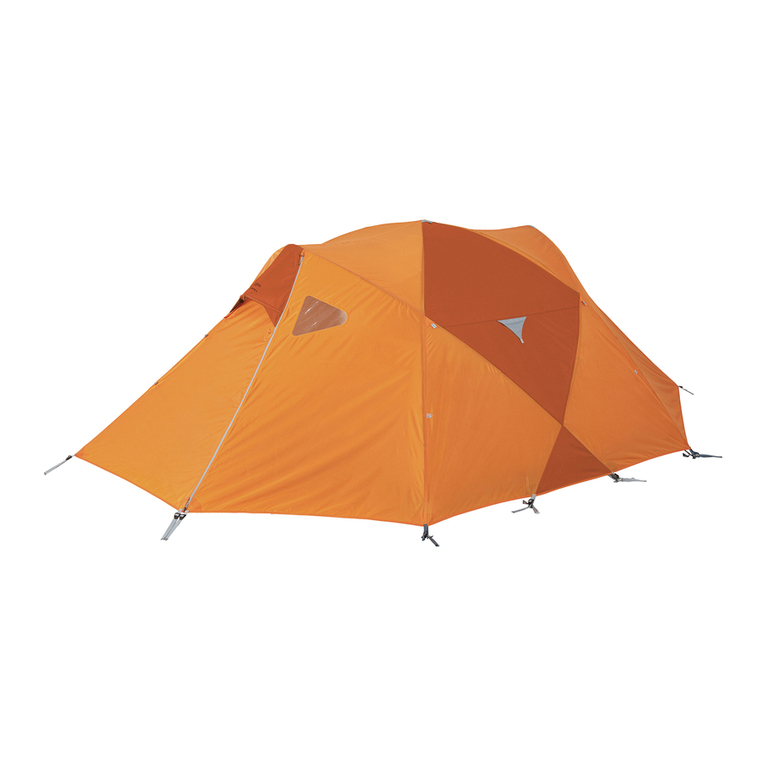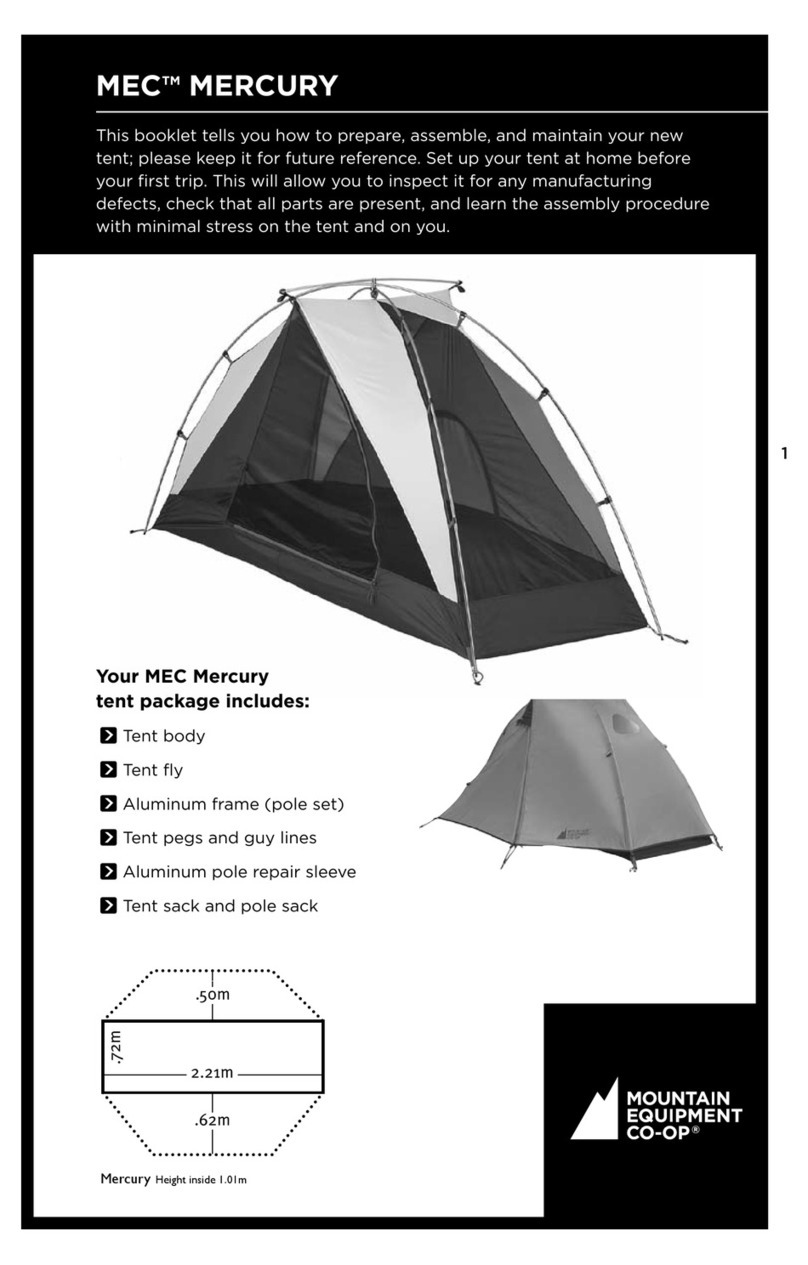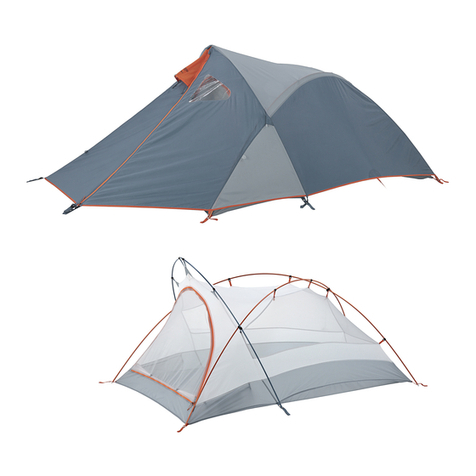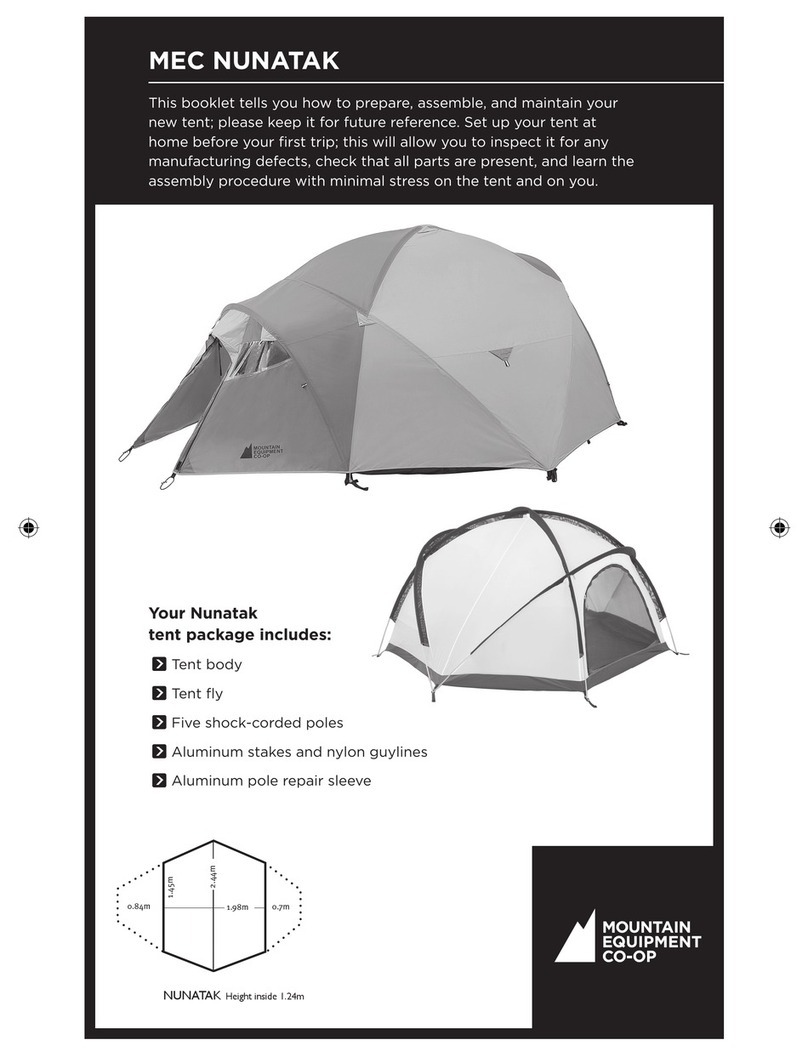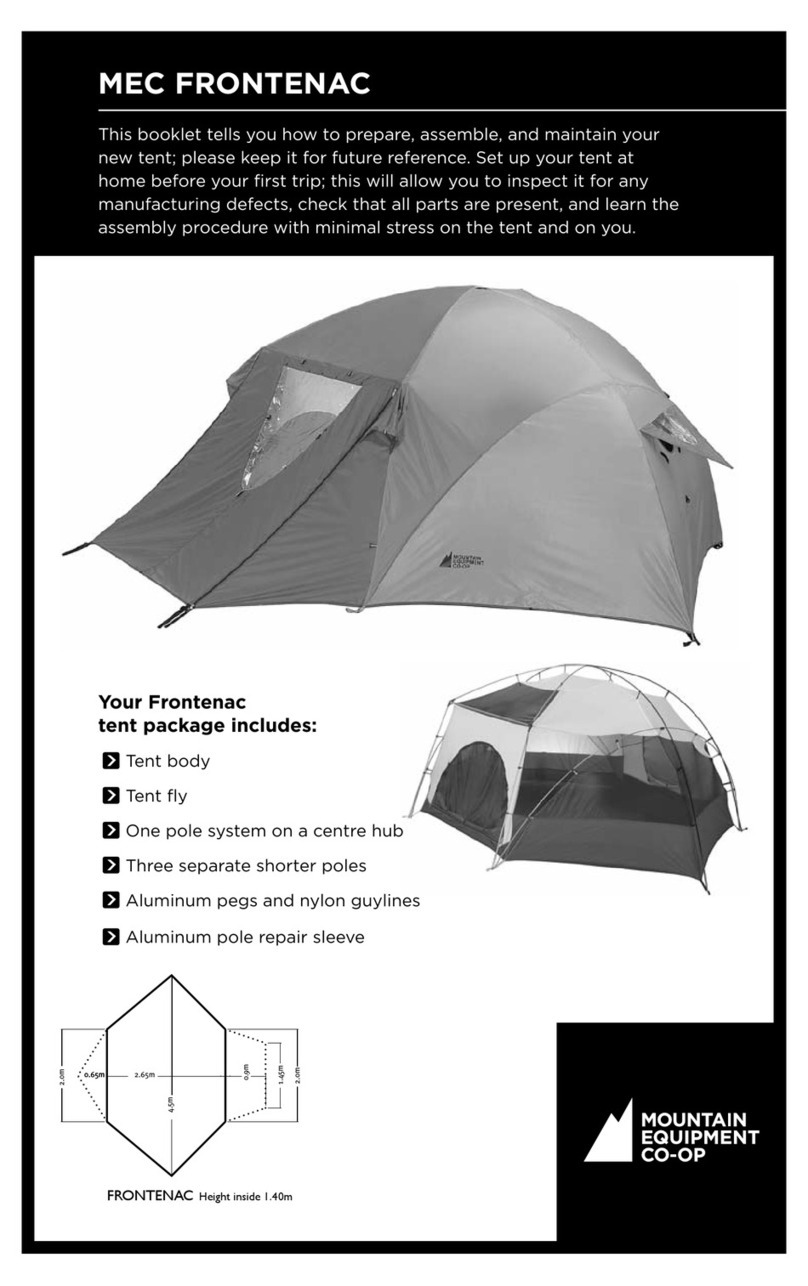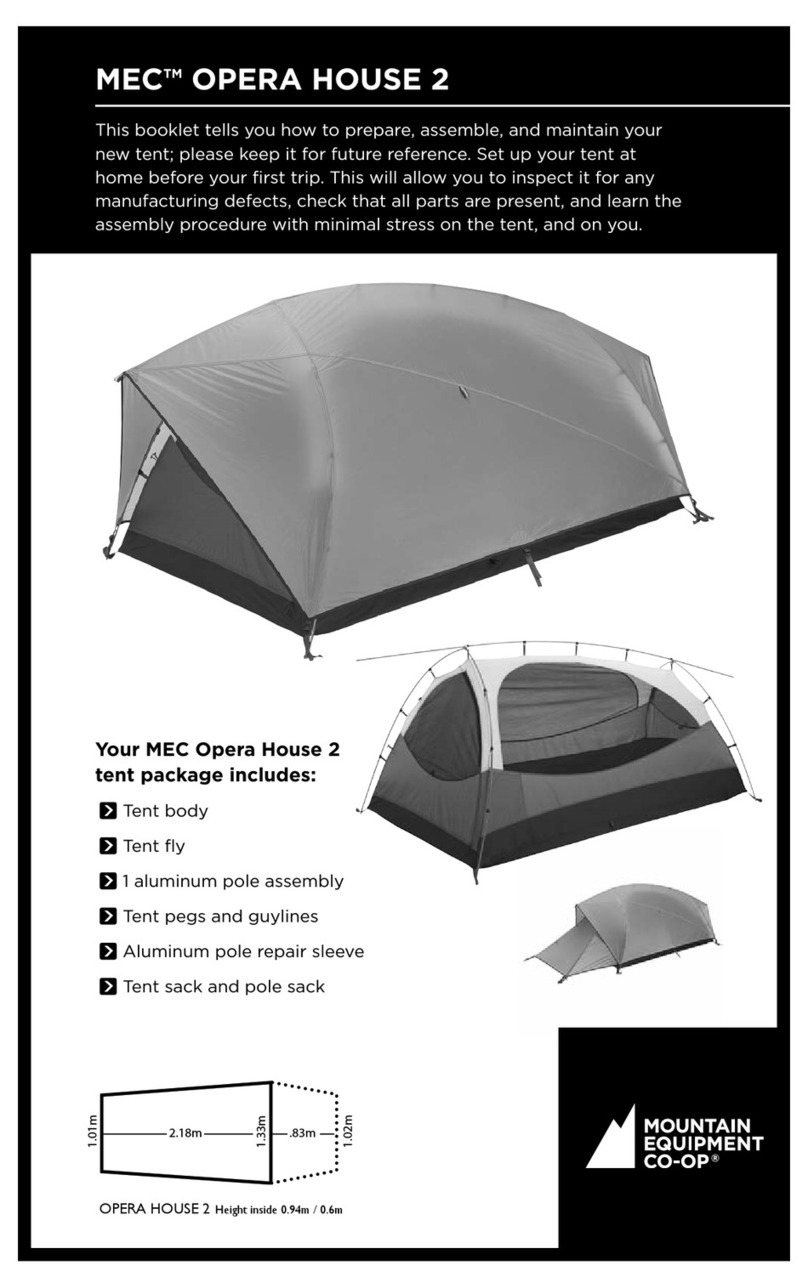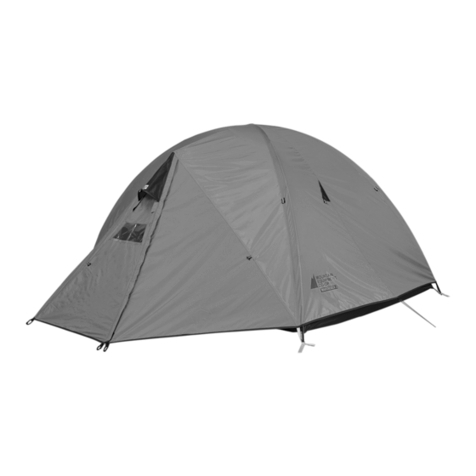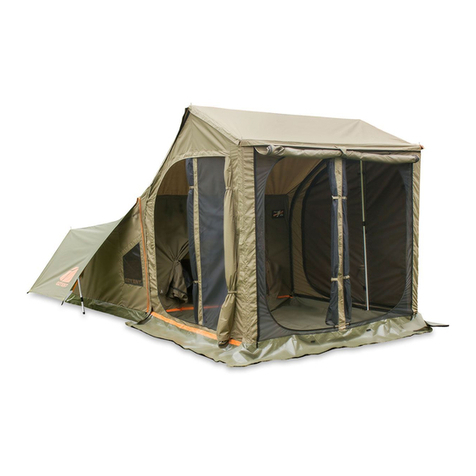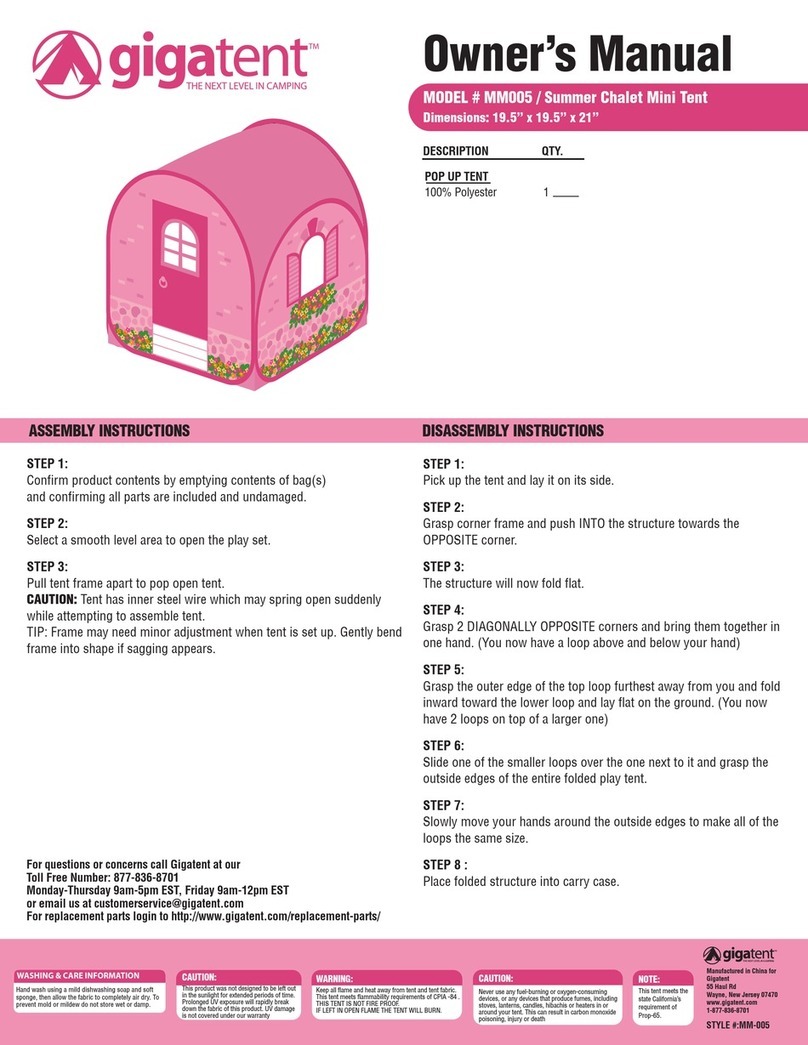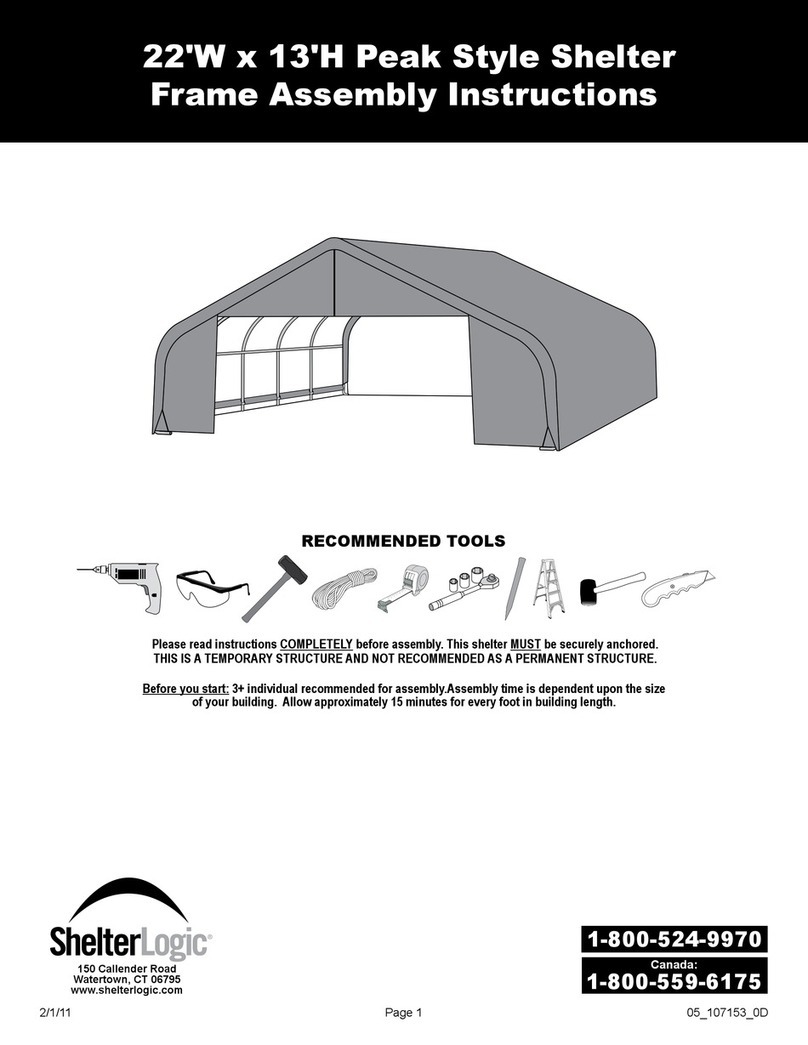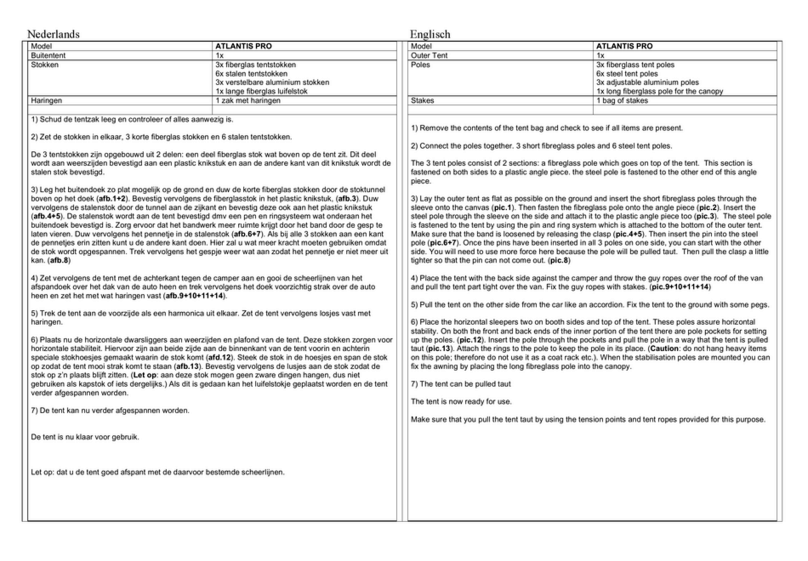
8
REPAIRING YOUR TENT
Fabric Tears
Watertight repairs to rips can be made with seam sealant such as McNett
FreesoleTM, AquasealTM, or Seam Grip®. For tears shorter than about 1.5cm
(1/2in.), apply duct tape to one side and sealant to the other. On longer
tears, apply duct tape to one side of the tear and, on the other side,
a patch of no-see-um netting that extends about 6-12mm (1/4-1/2in.)
beyond each edge of the tear. Use oval or circular patches (rounded
edges are less likely to peel away than sharp corners). Cover the patch
thoroughly in sealant. Once the sealant is completely dry, the duct tape
can be removed from small and large repairs alike.
For longer trips, we recommend taking an expedition sewing kit and extra
nylon, webbing, a spare pole section, and narrow-diameter (2.5mm) tent
pole shockcord. Coghlan’s Seam Saturant or the like will prevent wicking
through a tent fly via seams or webbing.
Fixing a Pole in the Field
Slip the pole repair sleeve over one pole end. Slide the sleeve along
until it is centred over the break in the pole, then wrap it into place with
duct tape. Be careful not to damage the tent fabrics when removing the
damaged pole.
Replacing a Broken Pole Section
The MEC Grip-TipTM pole tips are press-fitted into place. Carefully tug out
the pole end tip nearest to the broken section. Being mindful of how
to retie it later, untie the end tip. Slide pole sections off the cord until
you reach the damaged section. Remove the broken piece, being careful
not to damage the shockcord. Thread on a new section of appropriate
length and diameter, followed by the other sections, then re-tie the end
tip knot.
Zippers
A worn slider is the cause of most zipper problems. An occasional
application of 303 Protectant or a silicone-based lubricant will help reduce
wear. Grit accelerates slider wear. Keep zippers clean by rinsing them
under water after use in windy/sandy environments. Sometimes, carefully
squeezing the top ends of the slider with a pair of pliers will restore some
life. If an inner door slider fails, run it as far as possible toward one end
of the zipper, and use only the other slider for the duration of the trip. A
sewing repair shop can replace inoperable sliders.
Hummingbird 2 eng.indd 8Hummingbird 2 eng.indd 8 3/1/05 2:35:14 PM3/1/05 2:35:14 PM

